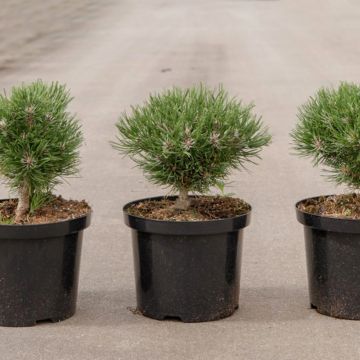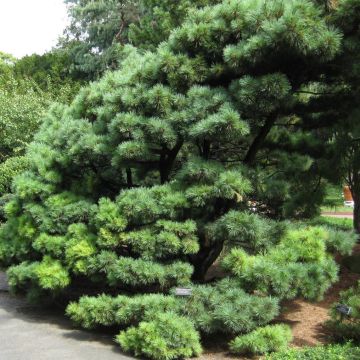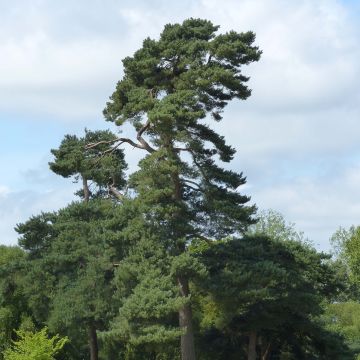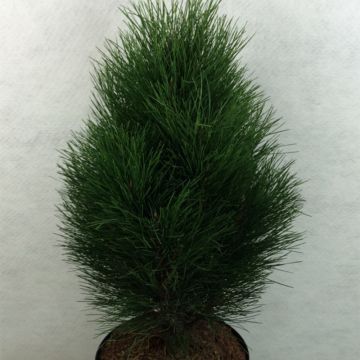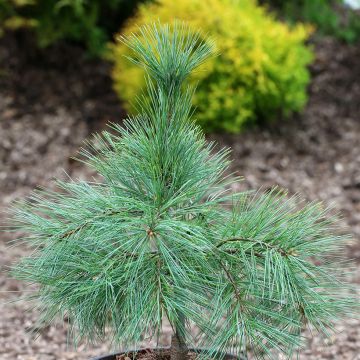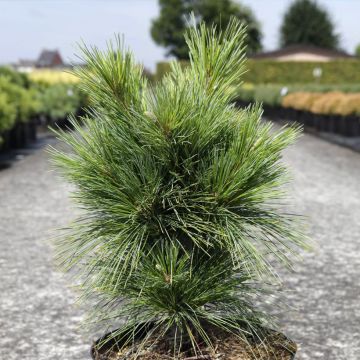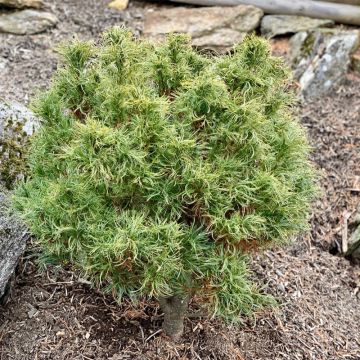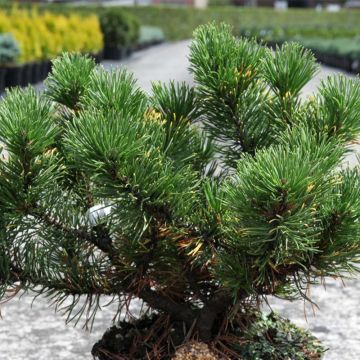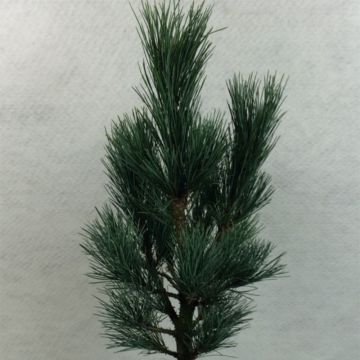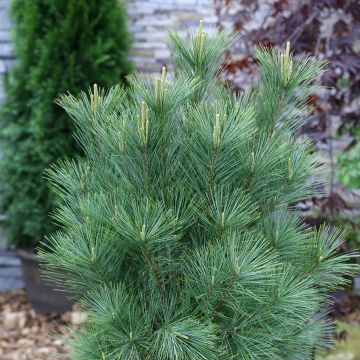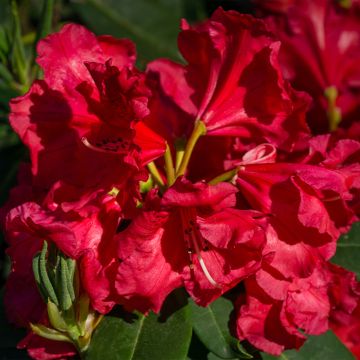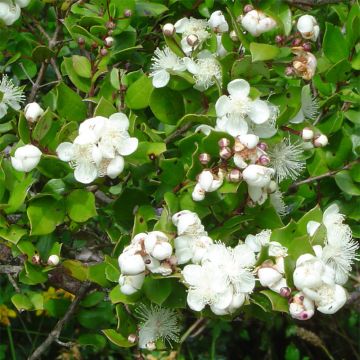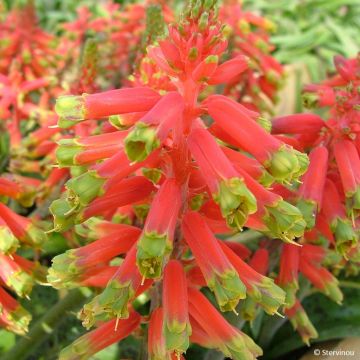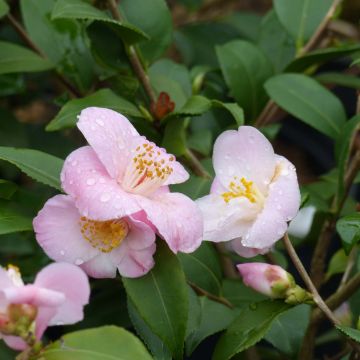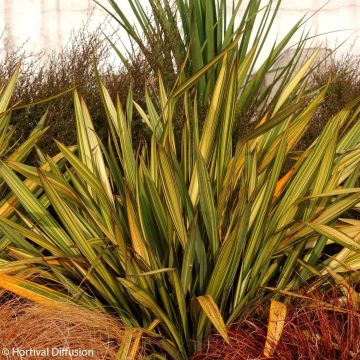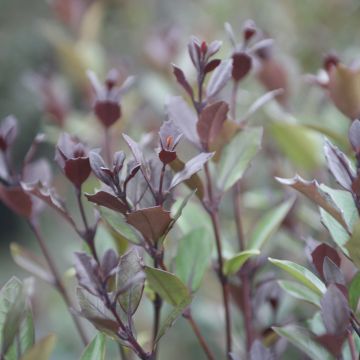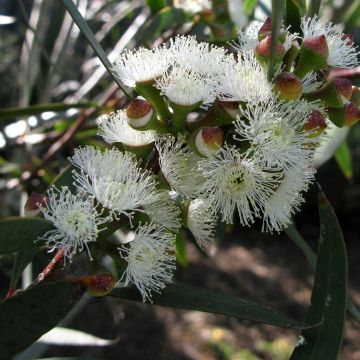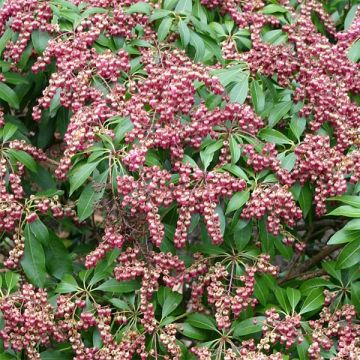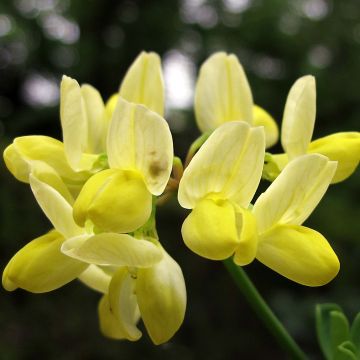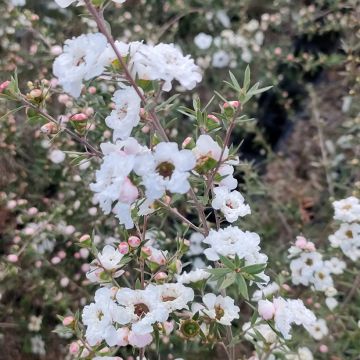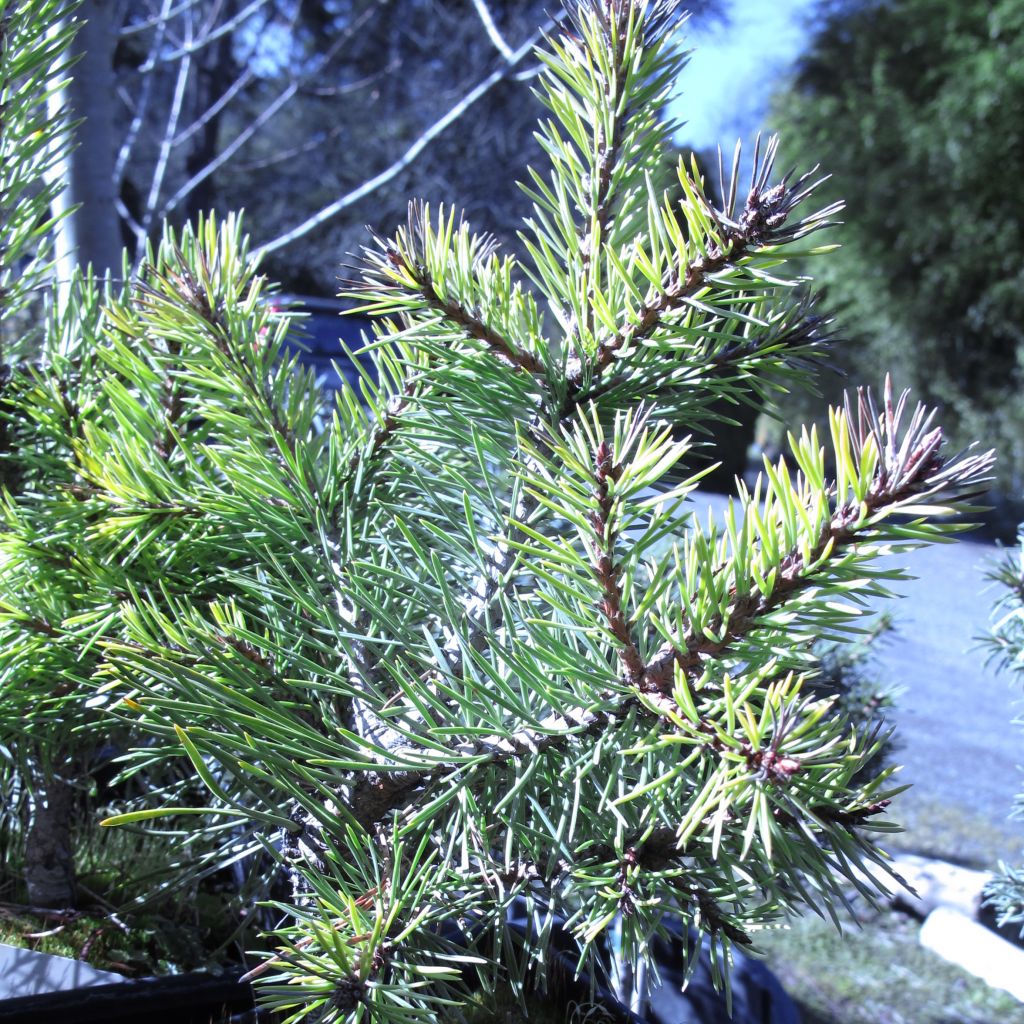

Pinus sylvestris Doone Valley - Pin sylvestre nain
Pinus sylvestris Doone Valley - Scots Pine
Pinus sylvestris Doone Valley
Scots Pine
Satisfied with the timely delivery, good recovery of the bush after transplantation. It is developing slowly as expected. Beautiful addition to a small garden, I am looking forward to new additions of the same style to continue my collection. Thank you.
CLAUDE S., 28/02/2017
This item cannot be shipped to the selected country
Delivery charge from €5.90
Delivery to Corse prohibited
More information
Schedule delivery date,
and select date in basket
This plant carries a 24 months recovery warranty
More information
We guarantee the quality of our plants for a full growing cycle, and will replace at our expense any plant that fails to recover under normal climatic and planting conditions.
From €5.90 for pickup delivery and €6.90 for home delivery
Express home delivery from €8.90.
Delivery to Corse prohibited: UE law prohibits the import of this plant from mainland France to Corse as part of the fight against Xylella fastidiosa. Please accept our sincere apologies.
More information
Does this plant fit my garden?
Set up your Plantfit profile →
Description
With its splendid light blue needle-like foliage and its irregular conical habit, Pinus sylvestris 'Doone Valley' is undoubtedly one of the best dwarf Scots pines. Its somewhat whimsical growth occasionally produces a few stronger branches that emerge from the bush to form secondary arrows. This variety is a wonderful specimen for rock gardens and will liven up any flower bed. It is also a very hardy plant, slow-growing, not demanding in terms of non-calcareous well-drained soil, and drought-resistant once established.
Pinus sylvestris, commonly known as Scots pine, is a conifer of the pine family, widely spread throughout northern Europe and Asia Minor. It is a light-loving species, adapted to drought and extreme cold, tolerant of poor soils, but wary of limestone. This tree reaches 30m (98ft) in height in its natural habitat and generally has a rounded crown on a trunk with ochre-red or vermilion bark. However, depending on its habitat, this pine can have a very diverse habit.
The 'Doone Valley' variety, is derived from this species. It is distinguished by its very small size, its irregularly broadened conical habit, and the unusual colour of its foliage; very decorative features. Its growth is slow, so that at 10 years old, it will reach a height of 60cm (24in), and will measure about 1.50m (5ft) in height and 1.10m (4ft) in spread at maturity. Its branches are covered with short needles that blend green, silver, grey, and blue, ranging from 3 to 6cm (1 to 2in) in length and twisted. They are grouped in pairs and arranged spirally around the branches. It is common for this variety to produce secondary arrows, which further enhance its unusual appearance. Its powerful taproot makes transplanting large specimens a bit delicate.
The 'Doone Valley' Scots pine is a plant that will delight collectors, but also a charming and easy-to-care-for small conifer, to be highlighted in a rock garden or as a border plant. It will find its place in all gardens, even the smallest ones, as its size is naturally small and its growth is slow. It requires no maintenance and adapts to a wide range of soils, with the exception of very limestone or heavy and compact soils. It pairs well with large stones, the geometric lines of swimming pools, and masonry works. It can be associated with complementary grasses or dwarf conifers with a prostrate habit (Juniperus horizontalis 'Blue Chip'), globose habit (Picea abies 'Little Gem'), or columnar habit (Juniperus communis 'Sentinel'). The true graphic qualities of conifers naturally impose themselves in the design of a contemporary garden, which prefers the aesthetics of shapes, silhouettes, and textures to the dance of flowering plants. These plants with their reassuring permanence provide lasting structure to a flower bed, mark pathways, and border terraces, easily replacing the strong presence of trimmed boxwood or holly. The key is to play with volumes and colours.
Report an error about the product description
Pinus sylvestris Doone Valley - Scots Pine in pictures
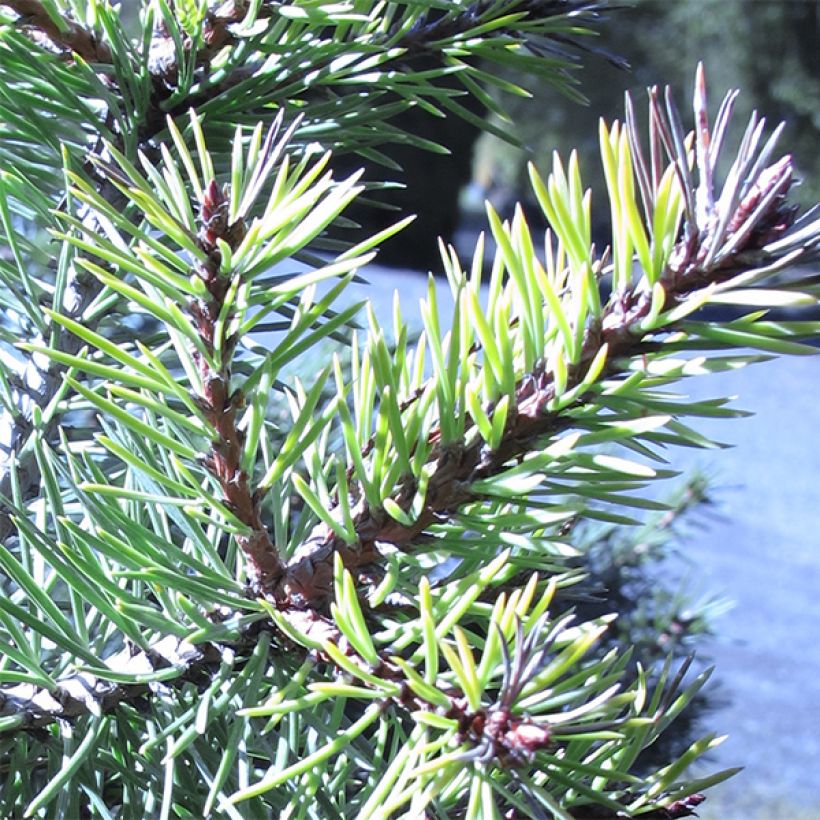

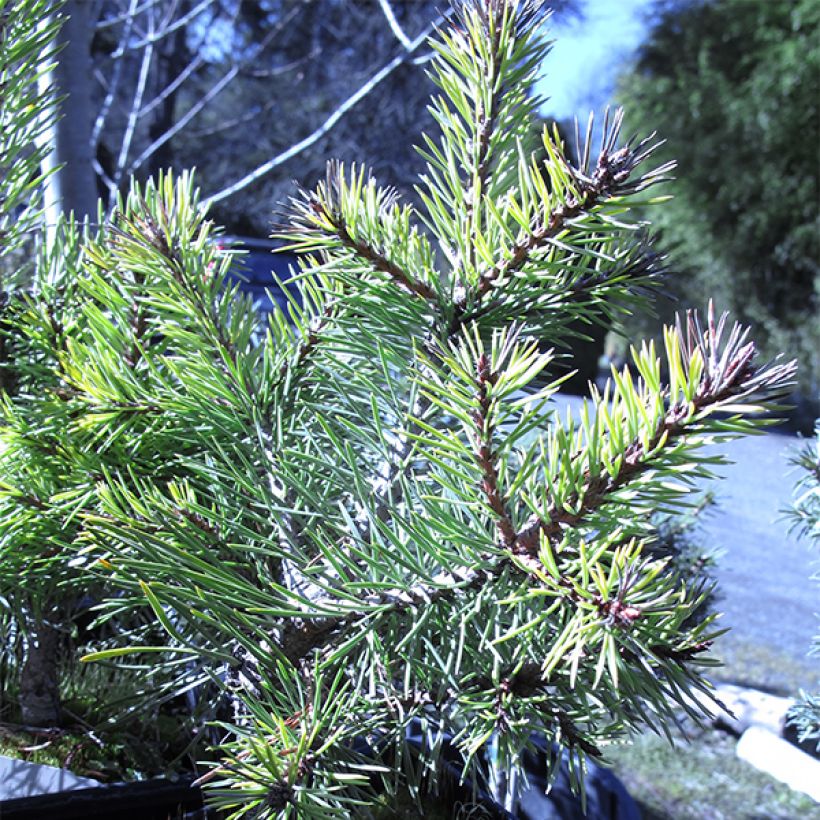

Plant habit
Foliage
Botanical data
Pinus
sylvestris
Doone Valley
Pinaceae
Scots Pine
Cultivar or hybrid
Other Pinus - Pine
Planting and care
Pinus sylvestris 'Doone Valley' should be planted from September to November and from February to June in ordinary but deep, light, well-drained soil, close to neutrality, even poor and dry in summer. It prefers loose and light, sandy or loamy soils, with low limestone content. Choose a sunny and well-cleared location. Soak the root balls well before planting. Add organic amendment during planting and water generously for the first three years, especially during prolonged drought. In very poor soil, you can apply a special conifer fertilizer every 2 years in April. Weed the soil in summer. This very hardy conifer (up to -40°C (1°F) at least) dislikes waterlogged, heavy, and compact soils, as well as alkaline soils. Pruning is not necessary.
Planting period
Intended location
Care
-
, onOrder confirmed
Reply from on Promesse de fleurs
Evergreen shrubs
Haven't found what you were looking for?
Hardiness is the lowest winter temperature a plant can endure without suffering serious damage or even dying. However, hardiness is affected by location (a sheltered area, such as a patio), protection (winter cover) and soil type (hardiness is improved by well-drained soil).

Photo Sharing Terms & Conditions
In order to encourage gardeners to interact and share their experiences, Promesse de fleurs offers various media enabling content to be uploaded onto its Site - in particular via the ‘Photo sharing’ module.
The User agrees to refrain from:
- Posting any content that is illegal, prejudicial, insulting, racist, inciteful to hatred, revisionist, contrary to public decency, that infringes on privacy or on the privacy rights of third parties, in particular the publicity rights of persons and goods, intellectual property rights, or the right to privacy.
- Submitting content on behalf of a third party;
- Impersonate the identity of a third party and/or publish any personal information about a third party;
In general, the User undertakes to refrain from any unethical behaviour.
All Content (in particular text, comments, files, images, photos, videos, creative works, etc.), which may be subject to property or intellectual property rights, image or other private rights, shall remain the property of the User, subject to the limited rights granted by the terms of the licence granted by Promesse de fleurs as stated below. Users are at liberty to publish or not to publish such Content on the Site, notably via the ‘Photo Sharing’ facility, and accept that this Content shall be made public and freely accessible, notably on the Internet.
Users further acknowledge, undertake to have ,and guarantee that they hold all necessary rights and permissions to publish such material on the Site, in particular with regard to the legislation in force pertaining to any privacy, property, intellectual property, image, or contractual rights, or rights of any other nature. By publishing such Content on the Site, Users acknowledge accepting full liability as publishers of the Content within the meaning of the law, and grant Promesse de fleurs, free of charge, an inclusive, worldwide licence for the said Content for the entire duration of its publication, including all reproduction, representation, up/downloading, displaying, performing, transmission, and storage rights.
Users also grant permission for their name to be linked to the Content and accept that this link may not always be made available.
By engaging in posting material, Users consent to their Content becoming automatically accessible on the Internet, in particular on other sites and/or blogs and/or web pages of the Promesse de fleurs site, including in particular social pages and the Promesse de fleurs catalogue.
Users may secure the removal of entrusted content free of charge by issuing a simple request via our contact form.
The flowering period indicated on our website applies to countries and regions located in USDA zone 8 (France, the United Kingdom, Ireland, the Netherlands, etc.)
It will vary according to where you live:
- In zones 9 to 10 (Italy, Spain, Greece, etc.), flowering will occur about 2 to 4 weeks earlier.
- In zones 6 to 7 (Germany, Poland, Slovenia, and lower mountainous regions), flowering will be delayed by 2 to 3 weeks.
- In zone 5 (Central Europe, Scandinavia), blooming will be delayed by 3 to 5 weeks.
In temperate climates, pruning of spring-flowering shrubs (forsythia, spireas, etc.) should be done just after flowering.
Pruning of summer-flowering shrubs (Indian Lilac, Perovskia, etc.) can be done in winter or spring.
In cold regions as well as with frost-sensitive plants, avoid pruning too early when severe frosts may still occur.
The planting period indicated on our website applies to countries and regions located in USDA zone 8 (France, United Kingdom, Ireland, Netherlands).
It will vary according to where you live:
- In Mediterranean zones (Marseille, Madrid, Milan, etc.), autumn and winter are the best planting periods.
- In continental zones (Strasbourg, Munich, Vienna, etc.), delay planting by 2 to 3 weeks in spring and bring it forward by 2 to 4 weeks in autumn.
- In mountainous regions (the Alps, Pyrenees, Carpathians, etc.), it is best to plant in late spring (May-June) or late summer (August-September).
The harvesting period indicated on our website applies to countries and regions in USDA zone 8 (France, England, Ireland, the Netherlands).
In colder areas (Scandinavia, Poland, Austria...) fruit and vegetable harvests are likely to be delayed by 3-4 weeks.
In warmer areas (Italy, Spain, Greece, etc.), harvesting will probably take place earlier, depending on weather conditions.
The sowing periods indicated on our website apply to countries and regions within USDA Zone 8 (France, UK, Ireland, Netherlands).
In colder areas (Scandinavia, Poland, Austria...), delay any outdoor sowing by 3-4 weeks, or sow under glass.
In warmer climes (Italy, Spain, Greece, etc.), bring outdoor sowing forward by a few weeks.

































